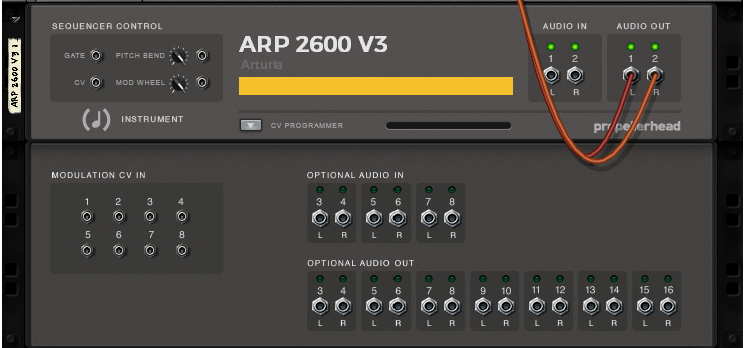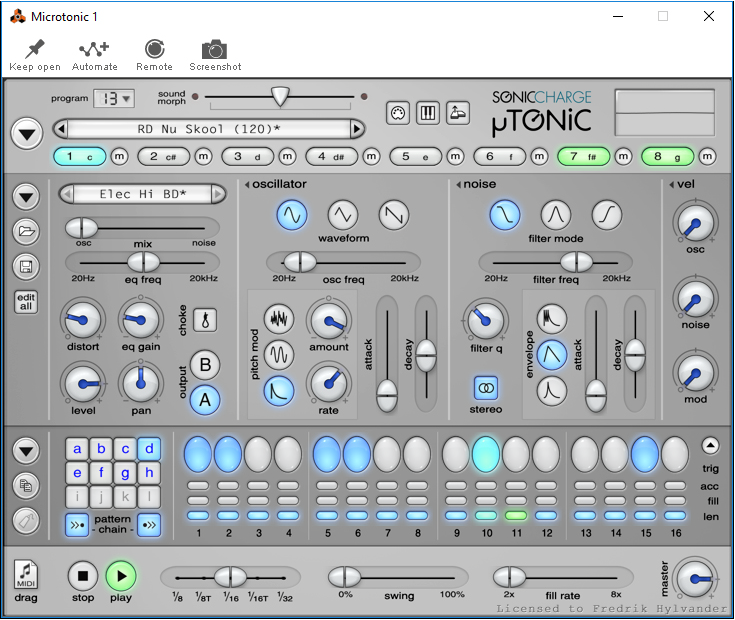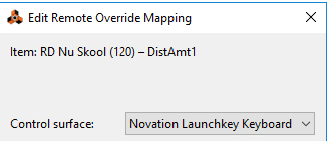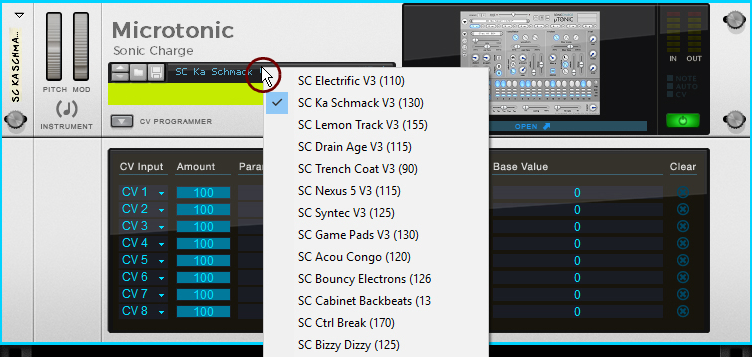|
•
|
There are also Next/Previous VST Program buttons to the right of the patch display, where you can step through the programs loaded in the VST plugin itself, see “Selecting VST programs”.
|
•
|
|
•
|
On the CV Programmer panel you can route CV signals from other (modulation) devices in the rack to parameters of the VST plugin. Each of the eight CV slots can receive a CV signal connected to the corresponding Modulation CV In connector on the rear panel of the Plugin Rack Device (see “Rear panel” below).
Refer to “CV modulation of VST parameters” for information on how to route CV signals to VST parameters.
|
•
|
|
•
|
Click this button when you want to assign a VST parameter for automation in the Reason sequencer, see “Automating VST parameters”.
|
•
|
Click this button and then select a VST parameter you want to remote control from your MIDI keyboard/control surface, see “Remote controlling VST parameters”.
If the “Keep open” function in the Plugin Window is active, selecting another device in the rack will NOT close the Plugin Window (see “Keep open” above).
|
|


























